One of the biggest risks involved in environmental clean-up tasks is the threat of unintended consequences. Often, the addition of synthetic chemicals intended to neutralize or prevent the spread of contaminants results in crucial elements of the biological web being negatively affected, sometimes severely. In almost every case, natural clean-up processes provide a practical way to eliminate the threat of negative side effects.
This is the inspiration behind BioHaven® Floating Islands which utilize nature to deal with contamination. Biological activity and plant uptake clean the water instead of chemicals.
Floating Island Science – Hydroponic Phytoremediation to Reduce Phosphorus and Nitrogen
How do BioHaven® Floating Islands clean water?
The scientific term for the process is called hydroponic phytoremediation. In plain English, phytoremediation is the use of plants to stabilize and reduce contamination in a variety of substrates, including soils, sludge, sediments, and water. On the other hand, hydroponics is a method of growing plants in solutions of water. (In the case of floating islands, the plant roots grow down through the planting holes that have some soil and peat. The roots push through the planting holes and matrix to hang down into the water.)
Put the two together, and the result is a floating biological wonder.
Phytoremediation Plants
Varieties of plants are capable of reducing different contaminants in the surface water.
These plant species can be selected based on factors such as their ability to absorb or break down the contaminants of concern, adaptation to local climates, biomass, root structure, rate of growth, and their roots’ ability to take up large quantities of water.
This diversity of phytoremediation plants means that they can be implemented to address specific contamination needs. Poplar trees are commonly used to clean up volatile organic compounds (VOCs) such as ethanol and formaldehyde, while colonial bent grass uptakes toxic heavy metals such as cadmium and mercury. Sunflower plants can uptake arsenic and store it in the vacuole.
Bulrush are popular for floating wetlands because they are good for nitrates.
Concerned about phosphorus? All plants need phosphorus to grow but native plants which grow fast and have long roots are good choices.
Floating Wetland Biofilms
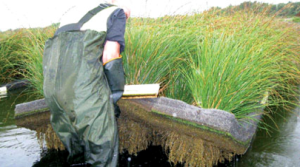
Roots have continual access to water since the islands can float to adjust to changing water levels to help hydroponic phytoremediation
Plants uptake accounts for 10 percent or less of the actual phytoremediation process. In fact, floating islands have been shown to reduce nutrients even without planted vegetation.
The rest of the job is handled by microorganisms naturally present in the water that require a surface area onto which they can cling. This is why the matrix material used for the floating wetlands is so important. These microbe colonies form a biofilm in and around the islands’ matrix. The microbes break down nutrients and pollutants. Since the island itself houses biofilm development, the removal of nitrogen, ammonia and phosphorous through microbes begins immediately.
As the roots of the plants in the island grow deeper into the water, they become an excellent site for microbial activity.
A symbiotic relationship forms between the biofilm and the plants. This cooperation, which awards fixed nitrogen to the plants and an abundant carbon source to the microbes, boosts the efficiency of the cleaning by both participants. This partnership is what makes the phytoremediation method used in islands so effective.
Using Artificial Wetlands for Cleaning Water Nature’s Way
In summary, these man-made wetland floating islands clean contaminants and organic compounds in the water using natural processes. The biofilm and microbes that colonize on the island matrix and phytoremediation plants improve water quality naturally without the need for additional human intervention water.
Once the island is launched, biology takes over and does all the work which makes BioHaven® Floating Islands the most convenient, efficient, effective and natural way to clean water.
For more information, contact
Midwest Floating Island
MidwestFloatingIsland.com| info@MidwestFloatingIsland.com |651-379-2480
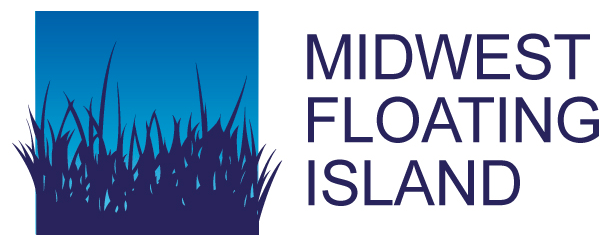
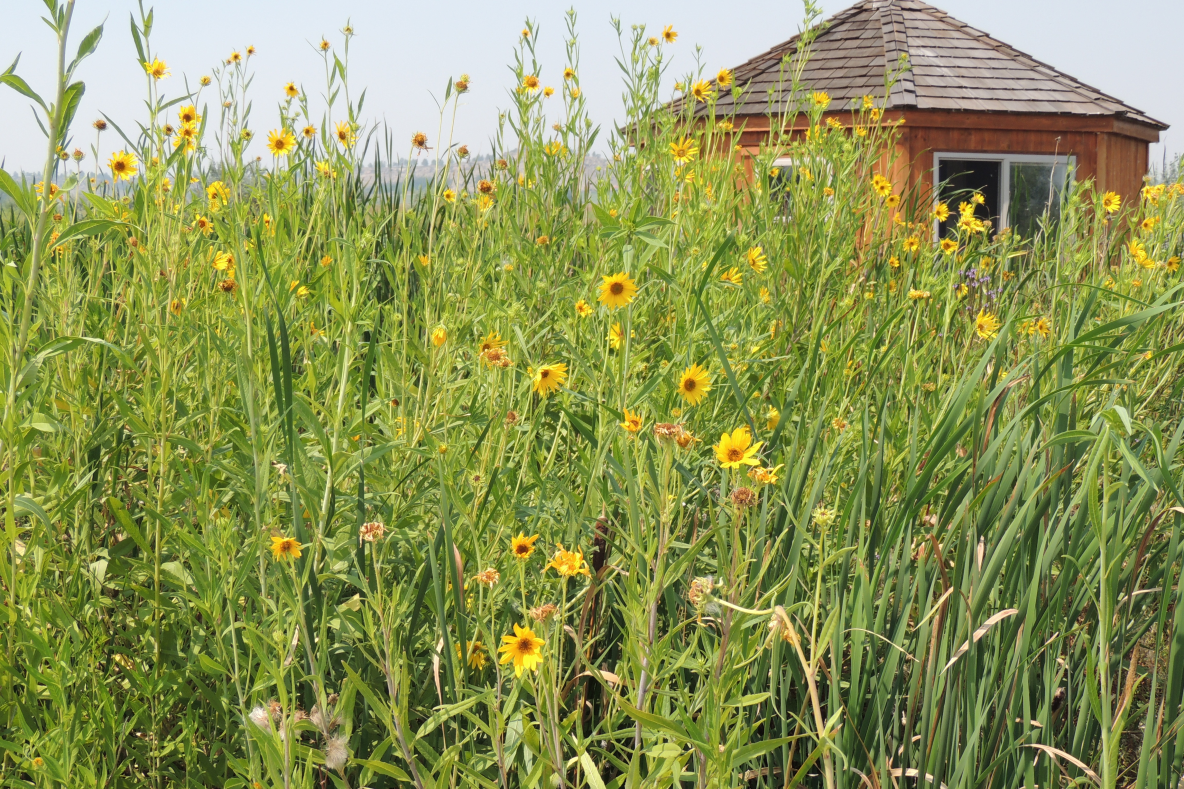
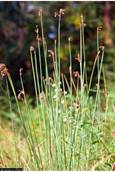
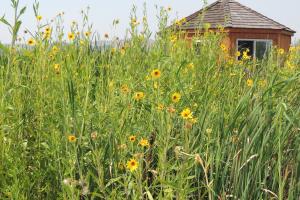
8 Comments on “Phytoremediation to Clean the Water Instead of Chemicals”
What plants would you suggest to use with a BioHaven unit to be located in central Indiana, please?
Thank you.
We recommend you talk with a native nursery with aquatic plants in your growing zone. We sent you an email with types of aquatic plants used in Minnesota and Wisconsin.
Can you please send me an email with the types of aquatic plants to use in helping to reduce nitrates in a spring fed pond?
thanks kindly,
bobbi
Is there anyway I could receive contact information on people specialized in this research?
What plants would you suggest to use in india
Tell me about the matrix you used for support
The matrix is made from recycled PET plastic.
Thank you for this post!!!! I was part of a project at a Texas school using wetland plants in floating mats in a detention pond used for storm water runoff. I love that the use of floating mats has become so popular as a way to remediate contaminants in runoff as well as hazardous pollutants. I can only remember the common name of one of the plants we planted – lizard tail – but we had an issue with nutria eating the rhizomes of at least one of the others. We planted some iris that that the nutria wouldn’t eat – we were in the experimental stage about 10 years ago. I stumbled on this post while doing research for a grad paper on phytoremediation technologies. I will be citing this post!